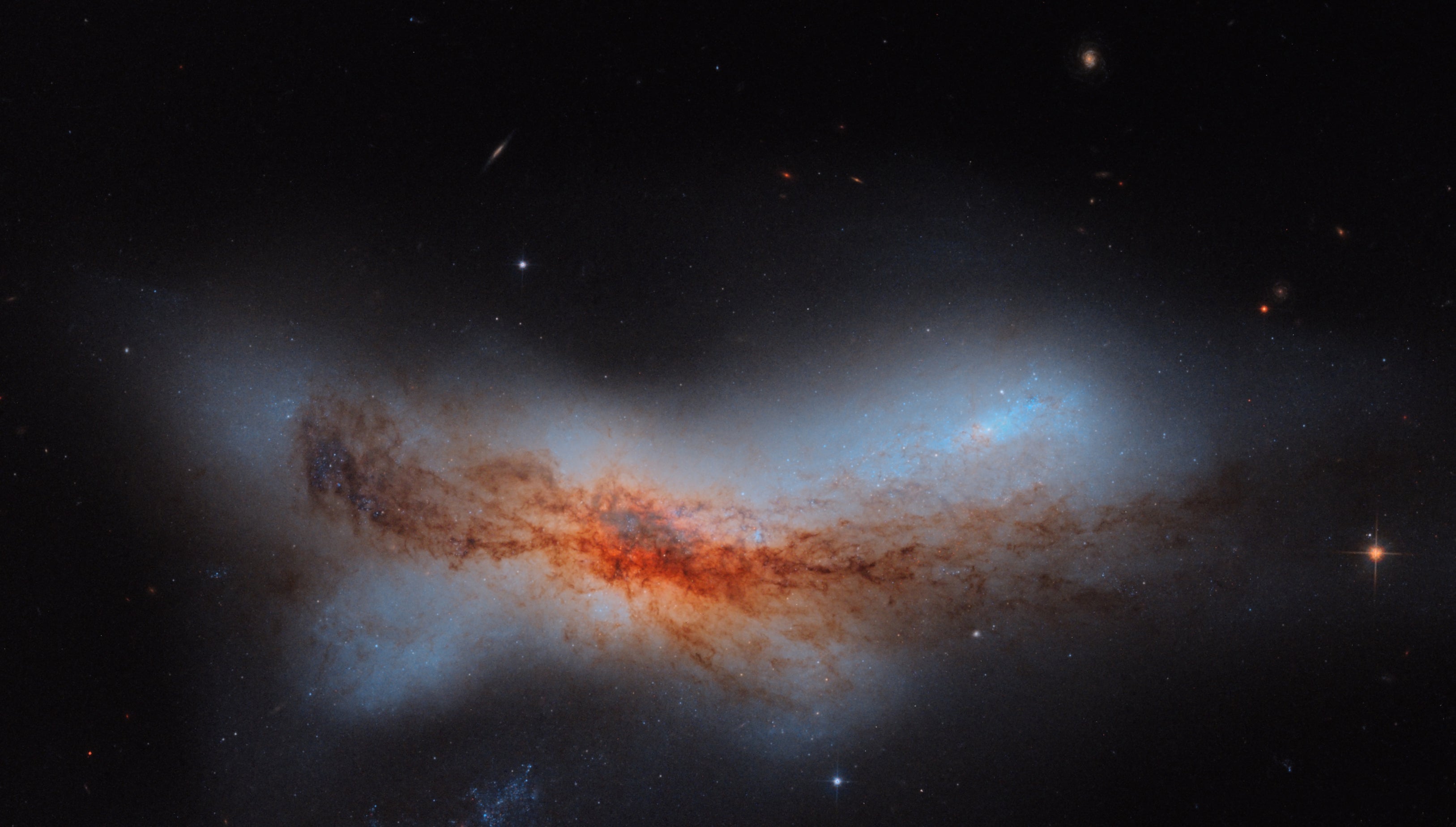
Although this deep-sky object is cataloged as NGC 520, it’s actually a pair of interacting spiral galaxies in the constellation Pisces the Fish. German-born English astronomer William Herschel discovered it in 1784.
Even a small scope will show its odd shape, which has led amateur astronomers to christen it the Flying Ghost. It measures 4.6′ by 1.9′ and glows at magnitude 11.4. It lies roughly 100 million light-years away.
To find it, look about 21/2° south-southwest of the magnitude 4.8 star Mu (μ) Piscium. Through a 6-inch telescope at low power, you’ll think you’re looking at an edge-on spiral. Crank the magnification up to 150x, however, and the sharp northwest edge will pop into view. Through larger instruments, the dark lane of dust that divides the two galaxies becomes visible.
Computer simulations have shown that this pair of galaxies began colliding some 300 million years ago. During such interactions, few stars collide with other stars — on the order of single digits. But the gravitational interaction of the two systems creates lots of new star-forming activity. It also expels much of the dust and gas that lies between the stars into intergalactic space. And, indeed, astronomers have located two small tails (called tidal tails because they’re created via the tidal forces exerted by the galaxies) composed of such material.
Interestingly, the larger galaxy is edge-on to our line of sight, which makes it fainter than its smaller, less massive companion. And the whole system is also not as bright as expected in X-ray wavelengths. Researchers think this is because the smaller galaxy didn’t have much gas prior to the collision.









